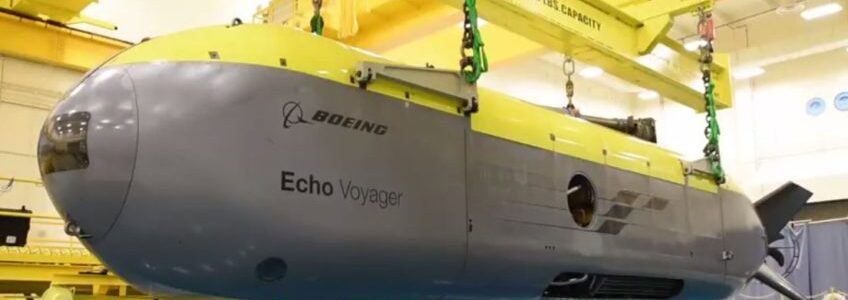From Tesla’s self-driving cars to an autonomous unmanned underwater vehicle called the Echo Voyager. This is where we are at the moment. Technology, human ingenuity and curiosity are what make these projects a reality.
Early adaptations of what lies beneath the big blue have been around for decades. Our interest and curiosity about ocean life and underwater technology were inspired by movies like 20 000 Leagues under the sea, James Bond’s submarine car to more recent deep sea documentaries.
It is a fact that we’ve only discovered about 5% of the world’s oceans. So why are we so focused on space travel if we haven’t even explored most our own planet? Maybe Boeing has the answer with its new unmanned undersea vehicle (UUV), the Echo Voyager.
Here is what we know about the Echo Voyager
The Echo Voyager is currently undergoing a number of autonomous test runs in the Pacific Ocean before going on deep sea trials. A team of engineers and divers have made a boat their new home and they run tests every day. Not even adverse weather conditions can deter them which include swells of up to 4-6 meters.
The tests include the vehicle’s communications, autonomy, system integrity, propulsion and the rechargeable power. They perform a combination of manoeuvres traveling at surface level to shallow dives by following different sets of navigation points repeatedly.
Unlike satellites or UAV’s, once the UUV is underwater, the Echo Voyager is completely on its own. This means every test is of the utmost importance as the Echo Voyager will ultimately learn from its own patterns of behaviour. It will allow successful navigation at depths, find its way back to base and know what to do if it’s in trouble. The UUV has to be able to determine and act accordingly and is made possible through rule-based decisions which are setup within initial testing and programming.
The new hybrid rechargeable power system allows the Echo Voyager to submerge for long distances without the need to ‘refuel’. It can spend up to 6 months underwater without being attached to a surface vessel like the earlier Echo Ranger and Echo Seeker.
Echo Voyager Specifications
Similar to other UUV’s, the Voyager runs on Lithium-ion (silver zinc) batteries that can power it for a few days at a time. As previously mentioned, what sets it apart from the rest is that it doesn’t have to rely on a mother vessel to refuel which further proves it’s superiority. The only time it has to surface is to recharge the batteries. The reason behind this is so the exhaust pipe can be in the air when the a diesel generator is used.
- Weight: 50 tons
- Length: 51 feet (15.5 meters)
- Dive depth: 11 000 ft (3 352 meters or 3.3km)
- Maximum speed: 8 knots
- Maximum range: 6 500 nautical miles (12 000km)
Echo Voyager Applications
According to Boeing, the Echo Voyager can be utilised in many ways. Above all else, I would think ocean exploration would be the most interesting and rewarding. It can take water samples and scan the ocean floor to map out previously inaccessible waters.
Other applications can include oil and gas exploration, inspect a ship or submarine’s hull integrity and check underwater infrastructure of oil rigs for example. The Voyager can even link up with satellites to transfer valuable data to its masters on land. Data is also in safe hands with the UUV’s backups and redundant systems. The standard commercial interface means customers won’t have to purchase special equipment and software.
Boeing is yet to reveal the price tag or its commercial availability but for those in the know, this is a special piece of equipment and well worth it. Whatever the purpose the Echo Voyager will serve, one thing is certain; exploring the deep oceans is now even more of a reality. Who knows what we will find down below.
PRV Engineering specialises in precision engineering and we are a one-stop shop offering you all the services under one roof. We manufacture for an expanse of industries including Oil and Gas, Automotive, Rail, Construction, Aerospace and Defense among others. Get in touch if you need help with your project.


Recent Comments